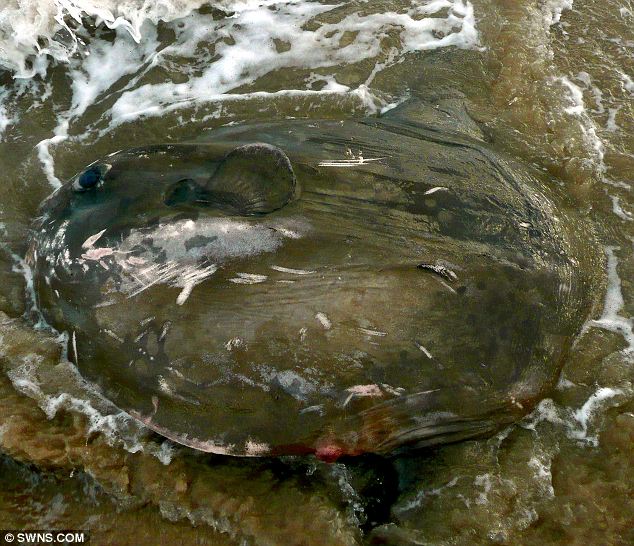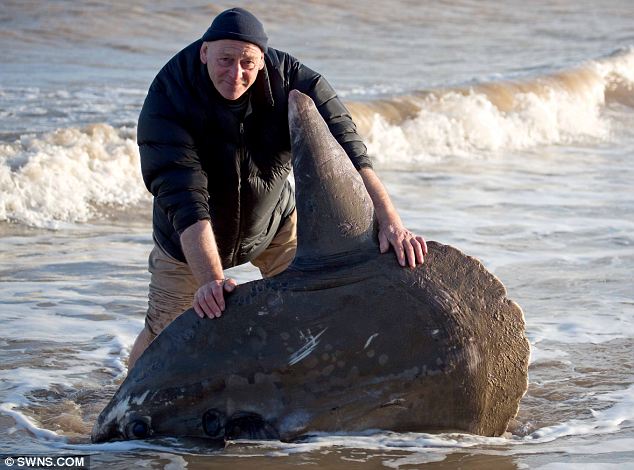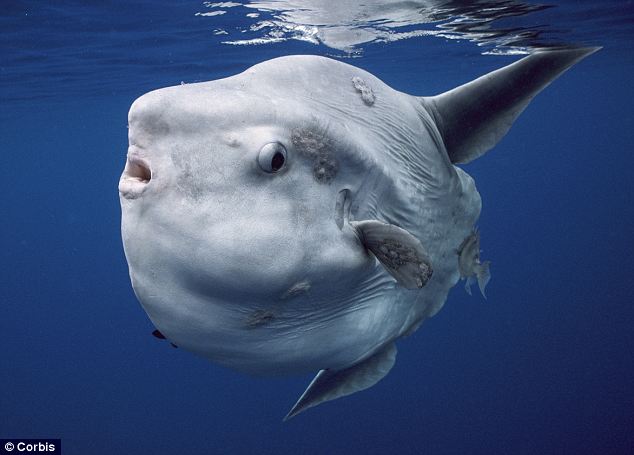The massive Sunfish - which weigh an average 157st each and measure 15ft by 12ft - have been spotted in Lincolnshire, Kent and Norfolk.
Large shoals of Sunfish - the largest bony fish in the world - have been tempted away from the mid-Atlantic by a massive hatch of jellyfish, which is their main food.
Marine scientists believe the sunfish, whose scientific name is Mola mola, have been carried round Scotland to the North Sea by strong prevailing winds and currents. Here they have been dying because they cannot easily tolerate water temperatures below 12C.
The British Marine Life Study Society has recorded significantly more sightings of sunfish on the East Coast than last year.
In January this year a sunfish was found on the beach in seaside resort Margate in Kent.
Then dog walker Matt Hyde, 44, found another while walking his Labrador Jimmy along The Sandilands beach near Sutton-on-Sea.
Wildlife enthusiast Carl Chapman made a third discovery of a dead sunfish on the beach in Overstrand, Norfolk, on December 9.
Andy Horton, director of the British Marine Life Study Society, has recorded more sightings of sunfish on the East Coast than last year.
He said: 'It is rare and unusual to get sunfish in the North Sea. They are mainly found in the middle of the Atlantic Ocean and the furthest I had ever previously seen them go is the Cornish coast.
'When there are stronger prevailing winds and currents the jellyfish and sunfish are carried to the South West coast of Britain.
'Then if the prevailing winds are strong enough some navigate around Scotland to the North Sea. The levels in the North Sea are higher this year.
'For sunfish to be washed up is even rarer as the prevailing winds would usually propel it away from land.
'I have heard of sightings in Irish and Welsh waters but on an English beach on the east coast is rare.'
Disc-like sunfish weigh an average 2,200lbs and measure 15ft across from fin to fin and 12 feet from nose to tail.
The sunfish swims on its side on the surface to gain heat from the sun, which is how it got its English name.
Its scientific name, Mola mola, is based on the Latin for 'millstone' which it was thought to resemble due to its colour, rough skin and round shape.
Its top and bottom teeth are fused to form a beak and it has claw-like teeth in its throat to help mash its diet of jellyfish.
The sunfish's skin, which is covered in dense mucus, is so leathery that it is host to more dermal parasites than any other sea creature.

Young fish are silvery in colour and adults are usually grey above, silvery grey to brown on the side, and paler or dusky on the belly, with differing mottling and spots.
They have a unique ability to suck and spit water at the same time, which helps drag in their prey.
Sunfish develop their truncated, bullet-like shape because the back fin which they are born with never grows.
Instead, it folds into itself as the enormous creature matures, creating a rounded rudder called a clavus.
They tend to swim alone and their mating practices are poorly understood. They live 10 years in captivity but their lifespan in the wild hasn't been confirmed.
Sunfish have been recorded in British waters before but their appearance is becoming more and more regular - a fact attributed to the rising temperatures of UK seas.
The fish are also known to swim of course when following shoals of small sealife, which they feed off.





Reader Comments
to our Newsletter